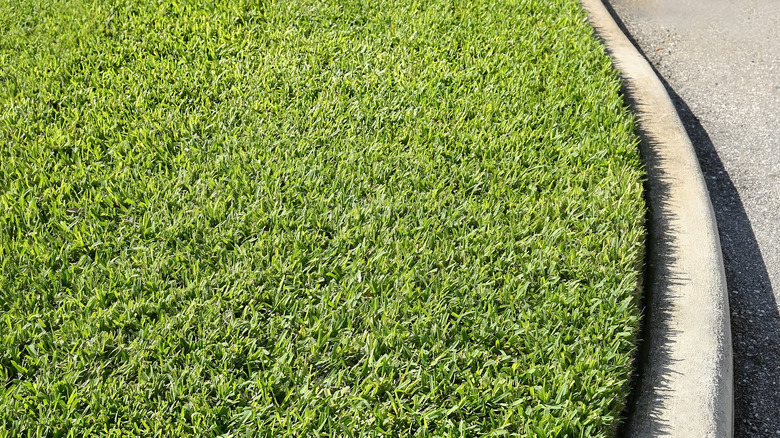If you’re new to the landscaping world, you might think that you can plant any kind of grass on your front lawn, and it will grow lush and green just as long as you water it enough. As it turns out, lawn care is a little more complicated than that. First, you need to choose the type of grass that thrives best in your climate — either a warm- or cold-season grass. As you might be able to guess, warm-season grass best grows in areas where there are mild winters and hot summers. Cold-season grasses, on the other hand, thrive best where summers are mild but winters are frosty. If you live in a southern state or the southwest, then you should opt for warm-season grasses like Bermuda and St. Augustine grass. However, it’s best to pick only one — you shouldn’t mix the two.
There are a few reasons why this is the case. First, the grasses look very different from each other, which can create an uneven aesthetic for your lawn. Second, they require different kinds of care, which can become tricky if you mix the seeds together. Third, Bermuda grass is invasive, and it can slowly start taking over your yard. Some experts say the mix can be done, but there are more cons than pros to mixing Bermuda with St. Augustine grass.
Don’t mix them for aesthetic reasons

St. Augustine grass has a completely different aesthetic than Bermuda grass. The former likes to grow in dense layers and has broad, thick blades. In contrast, the latter is more fine-textured and has thin-pointed blades. While each type of grass creates an attractive warm-season lawn on its own, it looks a bit mismatched if grown together. If folks do decide to mix the two, they often grow Bermuda in the middle of the lawn since it can handle heavy foot traffic better, and St. Augustine on the edges where you can see it up close and personal. This allows you to appreciate the thicker, nicer grass at a closer range.
While this might seem like an innocent enough mix, the issue is that Bermuda is considered invasive because of the way it grows. Its rhizomes spread underground quickly, and they can easily leave their designated area and begin to take over the entire yard. This will lead it to either choke out the more expensive St. Augustine grass, or it will grow in uneven patches around the lawn, creating an imbalance. Either way, the lawn won’t look particularly uniform.
Don’t mix them due to different care needs
Planting Bermuda and St. Augustine together can also be tricky due to their different maintenance and care needs. First, they require different mowing heights. For best results, St. Augustine should be mowed high — between 2.5 and 4 inches. If your lawn gets plenty of full sun, then it should be mowed lower, but if your yard is mostly in the shade, it should be mowed higher. On the other hand, Bermuda grass should be mowed down to .5 to 1.5 inches in height. The lower you mow, the better this grass looks. As you can imagine, if you have a difference of two inches in height, that can make your lawn look patchy.
Secondly, St. Augustine grass requires more water than Bermuda to thrive, which can be tricky if you mix the two together. During peak summer, Bermuda grass typically needs to be watered three times a week to stay lush and hydrated, whereas St. Augustine needs water at least four times a week. Not only does it need to be watered more frequently, but it needs a bigger volume, too. St. Augustine grass typically needs twice as much water as Bermuda grass, requiring between .75 to 1.5 inches of water per week. This makes it difficult to water both correctly if they’re mixed together. So it’s best to choose just one type of warm-season grass for your lawn.